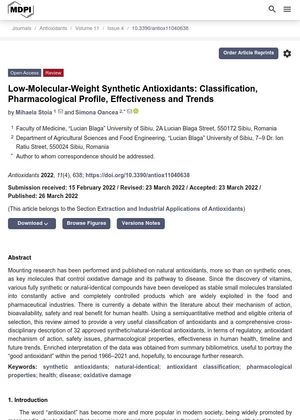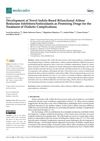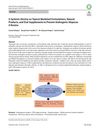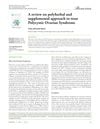Low-Molecular-Weight Synthetic Antioxidants: Classification, Pharmacological Profile, Effectiveness, and Trends
March 2022
in “
Antioxidants
”

TLDR Synthetic antioxidants are effective, cheap, and stable, with some like zinc and cholecalciferol reducing child and cancer deaths, but the safety of additives like BHA, BHT, TBHQ, and PEG needs more research.
The review "Low-Molecular-Weight Synthetic Antioxidants: Classification, Pharmacological Profile, Effectiveness and Trends" analyzes 32 approved synthetic/natural-identical antioxidants, highlighting their high efficacy, low cost, and stability. The authors propose a new classification of antioxidants based on eight criteria and discuss their role in nutrition research and their impact on mortality. The document also discusses the role of these antioxidants in protecting cells against oxidative damage and their use in pharmaceuticals and the food industry. Some antioxidants, such as acetylcysteine, ascorbic acid, and zinc compounds, have been considered as supportive and therapeutic options in patients with COVID-19. The document also mentions the use of antioxidants in cosmeceuticals, with melatonin recommended for the treatment of androgenic alopecia. Despite potential harmful effects of certain antioxidants like BHA, BHT, and TBHQ, they have been found to inhibit TNF and protect cells against apoptosis. The document concludes that while natural antioxidants have been the focus of most research, synthetic ones also hold significant potential. It highlights zinc and cholecalciferol as "good antioxidants" based on high-quality evidence of their effectiveness in reducing child and cancer mortality. The safety of antioxidant additives like BHA, BHT, TBHQ, and PEG is a public health concern that requires further investigation.




